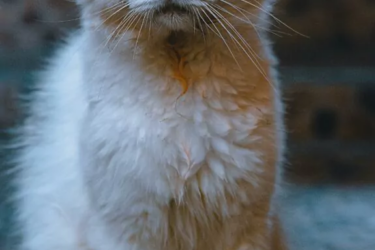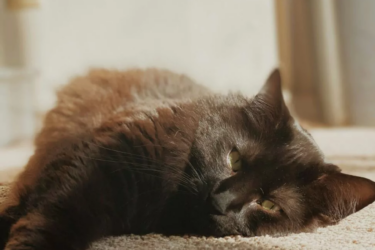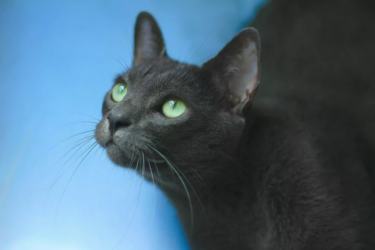
- The Burmilla has a silky coat in various colors, with a slim and muscular body and large expressive eyes.
- They are playful, curious, intelligent, and social, which makes them get along well with people and other pets.
- Regular grooming of their short coat is simple but important for their health.
- The Burmilla is gaining popularity worldwide due to their unique appearance and charming personality.
Hello cat lovers, welcome to the fascinating world of the Burmilla cat! If you’re looking for a unique and special cat, you’ve come to the right place. The Burmilla is a beautiful hybrid between the Burmese and the Chinchilla Persian.
This breed originated in the 1980s in the United Kingdom and has since captured the hearts of many. In this blog post, we delve deep into the world of the Burmilla, learning all about their appearance, personality, care, and much more. So that you’ll soon know everything about this cat breed and might even consider getting one.
Physical Characteristics of the Burmilla
The Burmilla is known for its silky coat and beautiful colors. The most common color is silver, but they can also come in other shades such as blue, black, and chocolate. The coat is short and easy to care for, making it ideal for busy owners. The Burmilla’s shiny coat gives them a regal appearance that is hard to resist.
With an average size and muscular build, the Burmilla is an impressive sight. They have large, expressive eyes that range from green to gold, and their ears are pointed and alert. Their slender yet muscular body makes them both elegant and athletic, which adds to their charm.
Although the Burmilla shares characteristics with both the Burmese and the Chinchilla Persian, they have some unique physical features. They possess the robustness of the Burmese and the refined beauty of the Chinchilla Persian. This makes them an ideal choice for enthusiasts of both breeds who want the best of both worlds.
Personality and Behavior of the Burmilla
The Burmilla is one of the most charming and sociable cat breeds you can find. They are known for their playful and curious nature, combined with a gentle and loving character. These cats are often very attached to their owners and enjoy quality time with the family.
Burmillas are exceptionally intelligent and eager to learn. They can quickly pick up new tricks and respond well to positive reinforcement. This makes them not only great cats but also enjoyable to train. Whether it’s learning a new trick or solving puzzle toys, the Burmilla will always surprise you with its cleverness.
These cats are very social and enjoy interacting with both people and other pets. They get along well with children and are often patient and tolerant. Their friendly nature makes them ideal for families and homes with multiple pets.
Care and Health of the Burmilla
Although the Burmilla has a short coat, regular grooming is essential to keep their fur in top condition. A weekly brushing is usually sufficient to remove dead hair and keep the coat shiny. This also helps strengthen the bond with your cat and prevent any skin problems.
Like all breeds, the Burmilla can be prone to certain health issues. Common conditions include kidney disease and dental problems. Regular vet visits and preventive care can help detect and treat these problems early. It is also important to maintain a healthy diet to promote their overall well-being.
Now that we have a good understanding of the impressive physical characteristics, loving personality, and care needs of the Burmilla, it’s time to outline what this special cat requires. This will help you be well-prepared and provide your Burmilla with the best life possible.
- A safe and clean home
- A warm sleeping place, such as a scratching barrel or a cat tree
- Good nutrition suitable for the Burmilla
- Multiple bowls of fresh water daily
- Protection against parasites (such as worms, fleas, and ticks)
- Love, attention, and playtime
- Care when the cat is sick
- A reliable sitter when you go on vacation
- Clean litter boxes with good-quality litter
- Fun and challenging cat toys
- Regular visits to the vet
Want a Burmilla? Prepare well and find out what it costs to have a cat!
Lifestyle and Environmental Needs of the Burmilla
The Burmilla can adapt well to both indoor and outdoor living, but they thrive best in a safe indoor environment. They love a stimulating environment with plenty of toys and climbing opportunities. This helps prevent boredom and promotes their mental and physical health.
A balanced diet is crucial for your Burmilla’s health. High-quality cat food rich in proteins and low in carbohydrates is ideal. It is also important to monitor their food intake to prevent obesity, which can lead to health problems, and you certainly don’t want an overweight cat.
Popularity and Breeding Practices
The Burmilla is rapidly gaining popularity worldwide, especially within cat associations. Their unique appearance and charming personality make them a favorite among cat lovers. They are often seen at cat shows and have won various awards for their beauty and grace.
When choosing a Burmilla kitten, it is important to find an ethical breeder. Avoid breeders who engage in mass production and look for one who prioritizes the health and well-being of their cats. Ask for health certificates and ensure the breeder is transparent about their breeding practices.
Facts and Interesting Trivia
Did you know that the first Burmilla cats were created by accident when a Burmese and a Chinchilla Persian came together? This unplanned litter led to the creation of an entirely new breed that quickly became popular.
There are several famous Burmillas that shine on social media and at cat shows. Their unique appearance and charming personality make them stars in the cat world.
The Burmilla is a fascinating breed that combines the best of both worlds. With their beautiful appearance, friendly nature, and relatively easy care, they are ideal for both new and experienced cat lovers. If you are looking for a unique and loving companion, definitely consider a Burmilla.
Burmilla at a Glance
- Origin: United Kingdom, emerged in the 1980s.
- Colors: Silky coat in various colors such as silver, blue, black, and chocolate.
- Eye Color: Large, expressive eyes ranging from green to gold.
- Personality: Playful, curious, intelligent, social, loving, and gentle.
- Average Lifespan: Relatively long-lived, often remaining active into old age.
- Best Environments: Suitable for families, singles, and homes with other pets.
- Care: Weekly brushing is usually sufficient; regular grooming is essential for a shiny coat.
- Health: Prone to kidney disease and dental problems; regular vet visits and preventive care are recommended.
- Social Behavior: Very social; good with children and other pets, patient and tolerant.
- Daily Needs: Good breed-appropriate nutrition, multiple bowls of fresh water, protection against parasites, love, attention, playtime, clean litter boxes, challenging cat toys, scratching posts, and regular vet visits.
Read all about the unique Havana Brown cat
Disclaimer: Petrebels is not a veterinarian or behaviorist; all content, information, and tips on this blog are intended to inspire and are for informational purposes only. If your cat has complaints or problems and you are unsure about their health, always consult a veterinarian or behaviorist.


